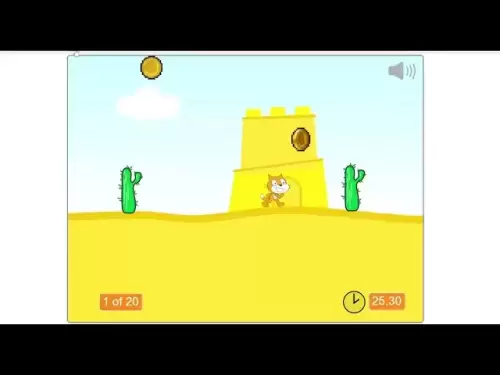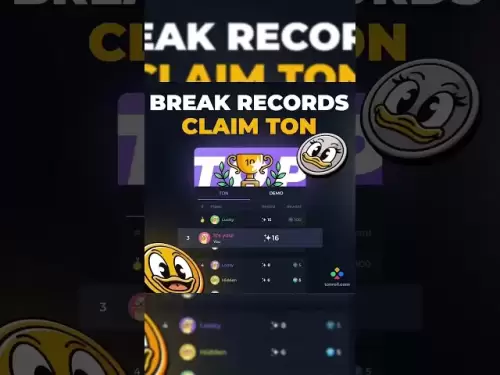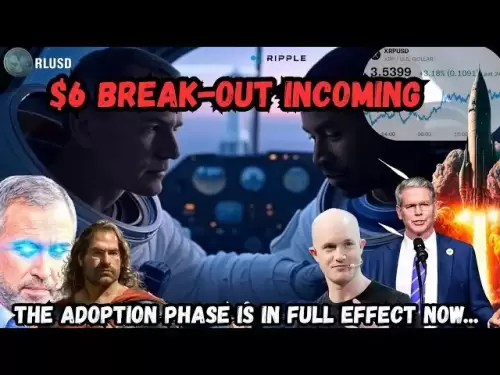-
 Bitcoin
Bitcoin $118100
0.44% -
 Ethereum
Ethereum $3765
5.84% -
 XRP
XRP $3.498
3.12% -
 Tether USDt
Tether USDt $1.000
0.00% -
 BNB
BNB $753.2
3.41% -
 Solana
Solana $181.7
3.58% -
 USDC
USDC $0.9999
0.01% -
 Dogecoin
Dogecoin $0.2704
12.75% -
 Cardano
Cardano $0.8684
5.85% -
 TRON
TRON $0.3151
-0.86% -
 Hyperliquid
Hyperliquid $46.06
4.51% -
 Stellar
Stellar $0.4695
2.48% -
 Sui
Sui $3.910
3.18% -
 Chainlink
Chainlink $19.36
6.65% -
 Hedera
Hedera $0.2750
3.99% -
 Bitcoin Cash
Bitcoin Cash $544.6
6.31% -
 Avalanche
Avalanche $25.12
3.69% -
 Shiba Inu
Shiba Inu $0.00001559
5.40% -
 Litecoin
Litecoin $116.8
5.10% -
 UNUS SED LEO
UNUS SED LEO $8.991
0.05% -
 Toncoin
Toncoin $3.283
2.79% -
 Polkadot
Polkadot $4.509
3.97% -
 Uniswap
Uniswap $10.67
6.58% -
 Ethena USDe
Ethena USDe $1.001
-0.01% -
 Monero
Monero $323.2
0.48% -
 Pepe
Pepe $0.00001410
6.37% -
 Bitget Token
Bitget Token $4.964
1.93% -
 Dai
Dai $0.9998
-0.01% -
 Aave
Aave $326.2
3.85% -
 Bittensor
Bittensor $421.8
2.46%
Binance futures tutorial
Binance Futures allows leveraged trading on crypto assets like BTC and ETH, offering tools for risk management and advanced trading strategies.
Jul 21, 2025 at 02:08 am
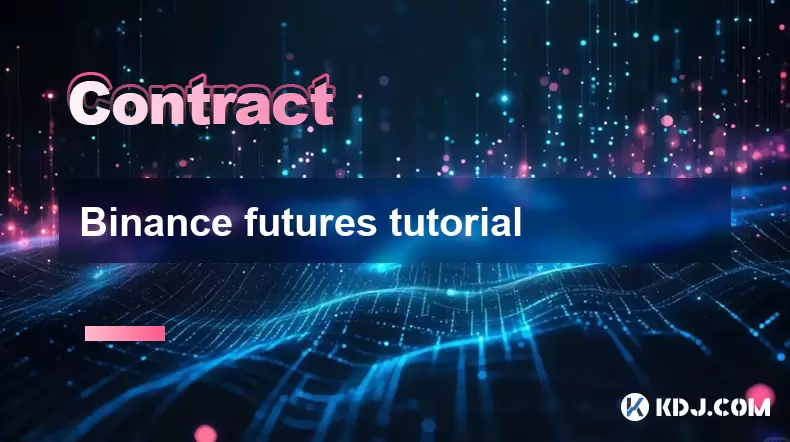
Understanding Binance Futures Trading
Binance Futures is a platform that allows traders to speculate on the future price of cryptocurrencies using leveraged contracts. Unlike spot trading, futures trading involves contracts that derive their value from underlying assets, such as BTC, ETH, or BNB. This type of trading enables users to go long (buy) or short (sell) based on market predictions.
To begin, users must have a Binance account and complete KYC verification. Once the account is verified, navigate to the Futures section on the Binance website or app. It is crucial to understand the risk involved in leveraged trading, as losses can exceed initial deposits.
Setting Up Your Binance Futures Account
Before diving into trading, it's essential to configure your Futures trading account properly. Go to the Futures Dashboard and select the "USDⓈ-M Futures" option. This is the most commonly used futures market on Binance, where contracts are denominated in USDT or BUSD.
Next, set your leverage. Binance allows users to adjust leverage from 1x up to 125x, depending on the asset. Beginners are advised to start with low leverage, such as 5x or 10x, to minimize risks. Use the "Position Mode" selector to choose between One-way Mode (simple long/short positions) or Hedging Mode (allows holding both long and short positions simultaneously).
Funding Your Futures Wallet
To trade futures, you must transfer funds from your spot wallet to your futures wallet. Go to the Wallet section under Futures and click "Transfer". Select the stablecoin or cryptocurrency you wish to move, enter the amount, and confirm the transaction.
It is important to note that funds in the futures wallet cannot be used for spot trading unless transferred back. Always double-check the network and address when depositing external funds to avoid irreversible losses.
Placing Your First Futures Trade
After funding your account, head to the Futures trading interface. Choose the contract you want to trade, such as BTC/USDT or ETH/USDT. The interface will display the order book, chart, and position panel.
Select the type of order you want to place. The most common are:
- Market Order: Executes instantly at the best available price.
- Limit Order: Sets a specific price at which the trade will execute.
- Stop-Limit Order: Triggers a limit order once a stop price is reached.
Enter the quantity, set your take profit and stop loss levels, and click Buy/Long or Sell/Short. Confirm the order and monitor your open positions in the Position section.
Managing Risk in Futures Trading
Risk management is crucial in futures trading due to the high volatility and leverage involved. One key feature on Binance Futures is the "Auto Margin" system, which allows traders to use cross margin or isolated margin.
- Cross Margin: Uses the entire futures wallet balance as collateral.
- Isolated Margin: Limits risk to the allocated margin for a specific position.
Set stop-loss orders to limit potential losses and avoid liquidation. Binance provides a Liquidation Price indicator on the position panel, showing the price at which your position will be forcibly closed.
Additionally, monitor funding rates if holding positions overnight. Funding fees are exchanged between long and short traders every 8 hours. Positive funding rates mean longs pay shorts, and vice versa.
Using Advanced Features on Binance Futures
Binance Futures offers several advanced tools for experienced traders:
- TradingView Integration: Allows users to apply technical analysis directly on the Binance platform.
- Conditional Orders: Enables setting orders that trigger based on specific price levels.
- Copy Trading: Follows experienced traders and mirrors their trades automatically.
To access these features, navigate to the "More" menu on the trading interface. For example, to use Conditional Orders, select "Stop Market" or "Trailing Stop" under the order types and set the required parameters.
These tools can help automate strategies and reduce emotional trading, but they should be tested thoroughly before live use.
Frequently Asked Questions
Q: Can I trade Binance Futures without KYC?
A: No, KYC verification is mandatory for Futures trading on Binance. This is part of compliance with regulatory requirements.
Q: How does the funding rate work in Binance Futures?
A: The funding rate determines the payment between long and short traders. It is calculated every 8 hours and depends on market conditions and interest rates.
Q: Is it possible to transfer funds from Futures Wallet to Margin Trading Account?
A: No, funds in the Futures Wallet are separate and cannot be used for Margin Trading unless transferred back to the Spot Wallet first.
Q: Can I use Binance Futures on mobile?
A: Yes, the Binance app supports Futures trading with full functionality, including order placement, position management, and risk controls.
Disclaimer:info@kdj.com
The information provided is not trading advice. kdj.com does not assume any responsibility for any investments made based on the information provided in this article. Cryptocurrencies are highly volatile and it is highly recommended that you invest with caution after thorough research!
If you believe that the content used on this website infringes your copyright, please contact us immediately (info@kdj.com) and we will delete it promptly.
- Cardano (ADA) Price Surges Amid Bitcoin ATH Buzz: What's Next?
- 2025-07-21 12:30:11
- Bitcoin, UK, and Sale: Decoding the Crypto Buzz in Britain
- 2025-07-21 12:30:11
- NFT Performers in Flux: Pudgy Penguins, Courtyard, and the Shifting Sands of the Market
- 2025-07-21 10:30:12
- Decoding HKMA's Stablecoin Licensing System: A New Era for Digital Assets?
- 2025-07-21 10:50:11
- Address, CryptoPunks, NFTs: What's the Buzz?
- 2025-07-21 10:50:11
- Ethereum, Crypto, and Market Moves: What's the Deal?
- 2025-07-21 11:30:11
Related knowledge

What is a maker vs a taker fee?
Jul 19,2025 at 01:14am
Understanding the Basics of Cryptocurrency Exchange FeesIn the world of cryptocurrency trading, maker vs taker fees are a fundamental concept that eve...

How to analyze Bitcoin futures data from CME?
Jul 19,2025 at 05:22pm
Understanding Bitcoin Futures on CMEBitcoin futures on the CME Group (Chicago Mercantile Exchange) represent a regulated financial instrument that all...
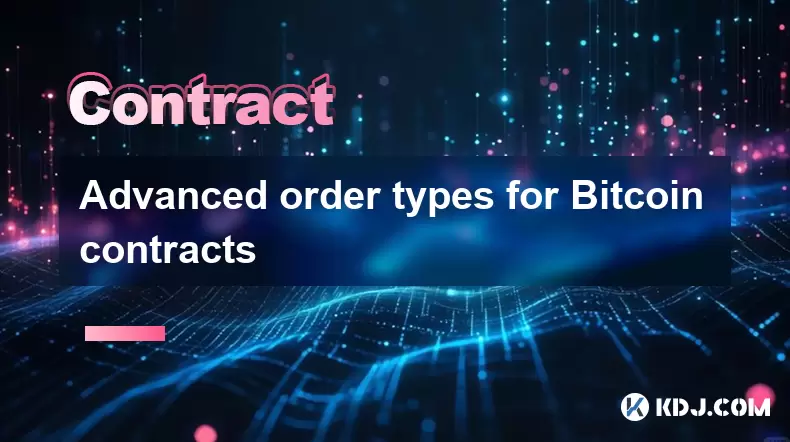
Advanced order types for Bitcoin contracts
Jul 21,2025 at 01:14pm
Understanding Advanced Order Types in Bitcoin ContractsIn the world of Bitcoin futures trading, advanced order types play a crucial role in managing r...
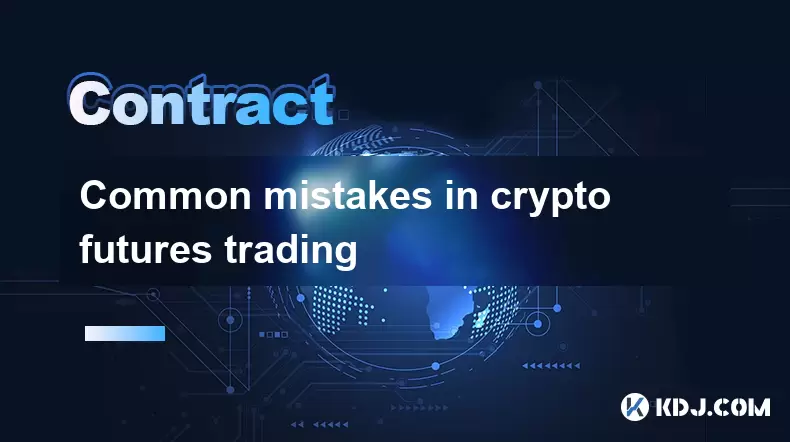
Common mistakes in crypto futures trading
Jul 20,2025 at 09:56pm
Overleveraging Without Risk ManagementOne of the most common mistakes in crypto futures trading is overleveraging. Traders often believe that using hi...

How to understand the liquidation price?
Jul 19,2025 at 10:00pm
What Is a Liquidation Price in Cryptocurrency Trading?In the realm of cryptocurrency futures and margin trading, the liquidation price refers to the s...
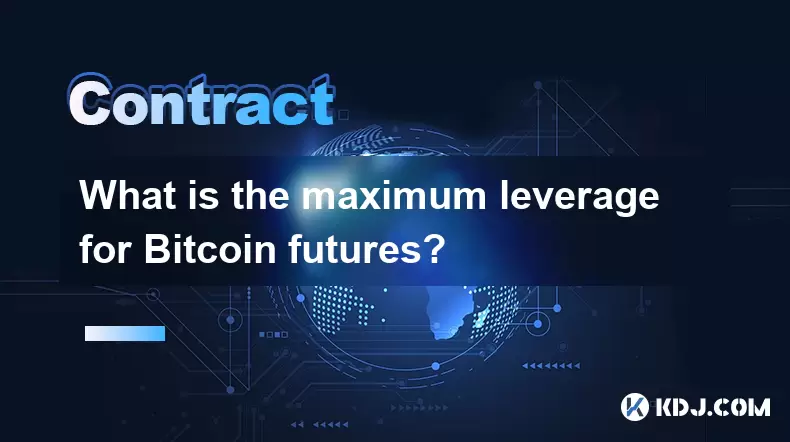
What is the maximum leverage for Bitcoin futures?
Jul 20,2025 at 03:42pm
Understanding Leverage in Bitcoin FuturesLeverage in Bitcoin futures refers to the use of borrowed capital to increase the potential return on investm...

What is a maker vs a taker fee?
Jul 19,2025 at 01:14am
Understanding the Basics of Cryptocurrency Exchange FeesIn the world of cryptocurrency trading, maker vs taker fees are a fundamental concept that eve...

How to analyze Bitcoin futures data from CME?
Jul 19,2025 at 05:22pm
Understanding Bitcoin Futures on CMEBitcoin futures on the CME Group (Chicago Mercantile Exchange) represent a regulated financial instrument that all...

Advanced order types for Bitcoin contracts
Jul 21,2025 at 01:14pm
Understanding Advanced Order Types in Bitcoin ContractsIn the world of Bitcoin futures trading, advanced order types play a crucial role in managing r...

Common mistakes in crypto futures trading
Jul 20,2025 at 09:56pm
Overleveraging Without Risk ManagementOne of the most common mistakes in crypto futures trading is overleveraging. Traders often believe that using hi...

How to understand the liquidation price?
Jul 19,2025 at 10:00pm
What Is a Liquidation Price in Cryptocurrency Trading?In the realm of cryptocurrency futures and margin trading, the liquidation price refers to the s...

What is the maximum leverage for Bitcoin futures?
Jul 20,2025 at 03:42pm
Understanding Leverage in Bitcoin FuturesLeverage in Bitcoin futures refers to the use of borrowed capital to increase the potential return on investm...
See all articles





















